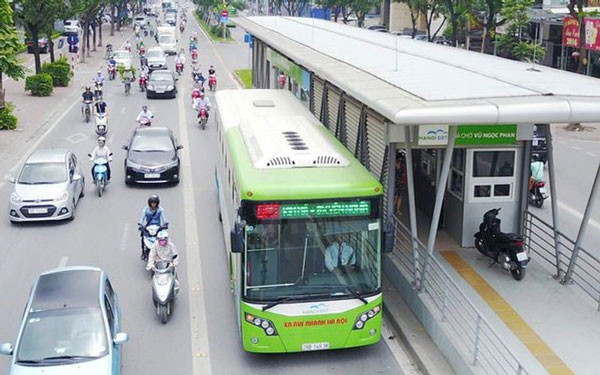
The city's government has just issued an action plan to implement the Government’s resolution on enhancing traffic safety and preventing traffic congestion in the 2022-2025 period in Hanoi.
Besides building bike lanes, Hanoi’s other proposal is increasing mass transit accessibility for people with disability and the elderly, as well as infrastructure to assist vulnerable groups.
The capital city will reorganize parking lots in both downtown areas and outlying districts, and build a transportation system that is friendly to people with disabilities and the elderly.
Under the action plan, Hanoi aims to reduce the number of traffic accidents and their victims by 5-10% a year until 2025, and by at least half by 2030, compared to the figures recorded in 2020.
As of mid-2022, Hanoi has more than 7.6 million vehicles, including over a million cars, 6.4 million motorbikes, and more than 179,000 electric motorbikes. However, there is no data regarding the number of bicycles in the city.
Previously, in March 2022, the Hanoi Department of Transport proposed to pilot the Hanoi urban bicycle sharing service with the assumption that public bicycles will bring people a “modern, convenient, friendly means of transport”, increasing the ability to transfer between different modes of public transport.
Hanoi’s public transport striving to meet 30-35% of commuting demand by 2025
The above-mentioned action plan of Hanoi also sets the target to develop a mass transit system that can meet 30-35% of local residents' travel demand by 2025 to reduce traffic congestion and environmental pollution.
To realize those goals, the city will enhance the application of scientific and technological advances in ensuring traffic safety and order and preventing gridlock by building a comfortable, effective and environmental-friendly traffic network.
Moreover, the city will focus investment on key traffic routes and urban railways.

To alleviate traffic congestion in the next three years, Hanoi plans to develop and synchronize its traffic infrastructure, focusing resources to expand major traffic routes, bridge systems, and vital traffic intersections.
It also sets a goal of reducing traffic jams on the seven to ten most congested streets each year. Another notable solution is to only approve the construction of apartment buildings, high-rise buildings, and shopping malls suitable to the city plan and comply with the requirements and regulations on parking lots as well as ensure connections with major roads in urban areas.
In the time ahead, the Hanoi People's Committee will strengthen information technology applications in traffic management in order to maximize the capacity of existing transport infrastructure, ensure traffic safety and order, and limit traffic accidents.
Besides, the city will build more interchange infrastructure, give priority to public transport and encourage people to use public transport services instead of private vehicles.
Hanoi will request the Vietnamese government to prioritize ODA loans for purchasing modern mass transit vehicles, with emission levels meeting EURO 5 standards, using clean energy and environmental-friendly engine.
Earlier, in 2020, the Hanoi People's Committee issued a plan for the expansion of the city’s mass transit network from the period 2021-2030.
According to the plan, the city’s public transport infrastructure will be expanded by 80% to 90% to ensure accessibility to the network by 2030, and meet the criteria that people anywhere in the city could hop on a bus within a radius of 500 meters.
The municipal authorities will define the mode of mass transit, the number of vehicles, and the network scope for each period, ensuring connectivity among highly populated areas.
According to a report from the municipal Department of Transport, Hanoi currently has 124 bus routes, covering 30 districts and towns, 453 out of 584 communes, representing coverage of 78% of the city’s territory.
Source: Hanoi Times